Title: “Why is There Pus Coming Out of My Mouth? Understanding the Causes, Symptoms, and Treatments” VIDEO BELOW THIS STORY okk
VIDEO BELOW THIS STORY

Introduction: Have you ever experienced the unpleasant sensation of pus coming out of your mouth? If so, you’re likely wondering what’s happening inside your mouth and how to deal with it. Pus, also known as oral abscess, is a common sign of infection in the mouth. While it may seem alarming at first, understanding the causes, symptoms, and effective treatments can help you resolve the issue quickly and avoid further complications.
In this detailed guide, we’ll cover everything you need to know about pus in the mouth, from the underlying causes to step-by-step treatment options. If you’re ready to find out what’s causing this problem and how to fix it, continue reading!
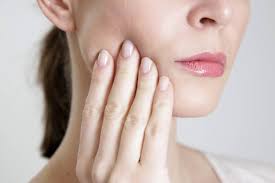
What is Pus in the Mouth?
Pus is a thick, yellowish-white fluid that forms as a result of an infection. It consists of dead tissue, bacteria, and white blood cells that work to fight the infection. The presence of pus in the mouth often signals that your body is trying to fight off an infection, typically in the gums, teeth, or other parts of the oral cavity. When pus begins to drain from the affected area, it’s usually a sign that the infection has become more severe or widespread.
Why does pus develop? When bacteria invade your gums, teeth, or oral tissues, your immune system sends white blood cells to fight the infection. In the process of this defense mechanism, pus forms as a result of the dead bacteria, tissue, and white blood cells.
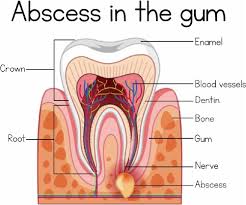
Common Causes of Pus in the Mouth:
Several conditions can lead to pus forming in your mouth. Understanding the cause is crucial to getting the right treatment. Here are the most common reasons:
- Dental Abscess (Tooth Infection):
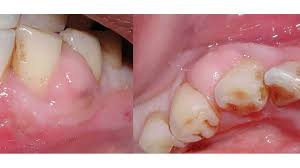
A dental abscess is one of the most common causes of pus in the mouth. It occurs when bacteria infect the pulp (the soft tissue inside the tooth) or the surrounding tissues, leading to severe pain, swelling, and pus. This type of infection can be caused by untreated cavities, cracked teeth, or previous dental work that has allowed bacteria to enter.- Symptoms of a dental abscess:
- Severe, throbbing toothache
- Swelling in the gums or face
- A bad taste or smell in the mouth
- Pus draining from a small pimple-like bump on the gums
- Symptoms of a dental abscess:
- Gum Disease (Periodontitis/Gingivi
- Tooth Decay (Cavities):
Tooth decay occurs when bacteria break down the enamel of the tooth, creating cavities. If left untreated, these cavities can deepen, affecting the inner pulp and causing an infection. This can lead to a buildup of pus if the infection spreads to the surrounding tissue. - Impacted Teeth or Wisdom Teeth:
If your wisdom teeth are impacted (unable to fully emerge from the gums), they can create pockets where food and bacteria get trapped, leading to infection. This infection can cause pus to drain from the gums or from around the tooth. - Oral Surgery Complications:
If you’ve recently undergone oral surgery or tooth extraction, an infection at the surgical site can cause pus to form. If bacteria were introduced during the procedure, or if you did not follow proper aftercare instructions, the site could become infected.

How to Identify the Symptoms of Pus in the Mouth:
If you think you have pus in your mouth, it’s important to identify the symptoms accurately. Here are the typical signs to look out for:
- Pain or Sensitivity:
If your gums or teeth hurt when you chew or drink something hot or cold, it could be a sign of infection. The pain often intensifies as the infection worsens. - Swelling in the Mouth or Jaw:
Swelling around the affected area is common. In severe cases, you may notice swelling in your cheeks or neck as well. - Bad Taste or Odor:
Pus is often accompanied by a foul taste or smell in your mouth. This is due to the infection and the release of bacteria from the abscess or gum disease. - Visible Pus Drainage:
You might notice a small bump on your gums that releases pus when squeezed. This is often a sign of an abscess or infection.
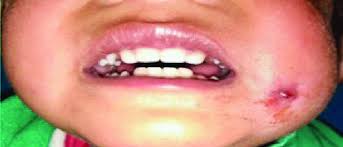
Treatment for Pus in the Mouth:
Now that you understand the causes and symptoms, let’s discuss how to treat this condition. It’s essential to consult with a dentist or healthcare professional for an accurate diagnosis, but here are some general treatments that can help:
- Visit Your Dentist for an Abscess Drainage:
The most effective treatment for a dental abscess is to visit a dentist for drainage. The dentist will carefully drain the pus from the infected area, relieve pain, and may prescribe antibiotics to help fight the infection. - Root Canal Treatment:
If the infection is inside the tooth pulp, your dentist might recommend a root canal to remove the infected tissue, clean the inside of the tooth, and seal it to prevent further infection. - Antibiotics:
In cases of severe infection, your dentist may prescribe antibiotics to help clear the infection. These will typically be given in combination with other treatments. - Pain Relief and Warm Saltwater Rinse:
Over-the-counter pain relievers (like ibuprofen) can help alleviate pain and reduce inflammation. A warm saltwater rinse can also help keep the area clean and soothe irritation. - Proper Oral Hygiene:
Maintaining good oral hygiene is essential to prevent further infections. Brush your teeth at least twice a day, floss regularly, and avoid sugary foods that can promote tooth decay.

Conclusion:
Pus in the mouth is a clear sign of infection and should not be ignored. Whether it’s due to an abscess, gum disease, or another underlying issue, seeking treatment early can help prevent serious complications. If you notice symptoms of pus or infection, don’t delay—schedule an appointment with your dentist today for an accurate diagnosis and appropriate treatment.
Remember, good oral hygiene is the key to preventing infections and ensuring your mouth stays healthy!
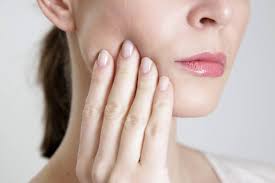
By following this guide, your visitors will be more likely to stay engaged and explore other related content on your website. The key to holding their attention is providing valuable, easily digestible, and actionable information.
Let me know if you’d like to make any further adjustments!
Tips to Prevent and Treat Pus in the Mouth:
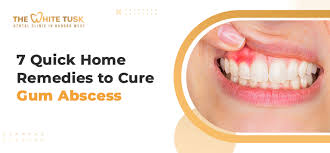
1. Maintain Regular Dental Check-ups: One of the most effective ways to prevent infections and avoid pus formation is by keeping up with regular dental check-ups. Even if you’re brushing and flossing diligently, plaque and tartar can still accumulate in hard-to-reach places. During your check-up, your dentist will thoroughly clean your teeth, removing any buildup that could lead to gum disease or cavities. Moreover, dental professionals can spot early signs of issues such as tooth decay or abscesses before they develop into bigger, pus-producing problems.
Why This Works:
- Preventative Care: Regular exams allow your dentist to catch problems before they escalate, reducing the risk of infections that result in pus.
- Early Detection: Gum disease, cavities, and other oral health issues can often go unnoticed until they become severe. Early intervention is key to preventing pus formation.
- Professional Cleaning: Professional cleanings remove plaque and tartar, ensuring that your gums and teeth remain healthy and free from infection-causing bacteria.
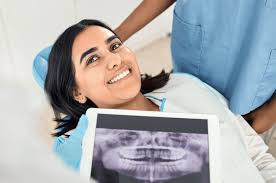
2. Rinse with Antiseptic Mouthwash Regularly: An antiseptic mouthwash is a fantastic way to fight bacteria and prevent infections that could lead to pus in the mouth. Rinsing with mouthwash can help kill harmful bacteria that brushing alone may not be able to reach. For individuals prone to gum disease or oral infections, using a mouthwash with antibacterial properties can drastically reduce the likelihood of infections and inflammation that could lead to pus formation.
Why This Works:
- Kills Bacteria: Antiseptic mouthwashes are formulated to kill bacteria that cause gum infections and tooth decay, the two primary causes of pus.
- Reduces Plaque Build-up: Plaque is the main contributor to gum disease, and mouthwash helps to prevent it from accumulating between teeth and along the gum line.
- Prevents Gum Infections: By keeping your mouth free from bacteria, mouthwash helps prevent conditions like gingivitis and periodontitis, which can lead to pus.
Tip: Make sure to choose a mouthwash that contains chlorhexidine or cetylpyridinium chloride for its antibacterial properties.
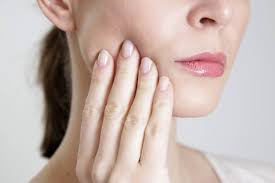
3. Incorporate Anti-Inflammatory Foods in Your Diet: Eating the right foods can have a profound impact on your oral health, and certain anti-inflammatory foods can help combat infection and prevent pus formation. Foods rich in vitamin C (like oranges, strawberries, and bell peppers) can help strengthen your gums, while omega-3 fatty acids (found in salmon, flaxseeds, and walnuts) reduce inflammation in the mouth. These nutrients support your immune system, making it easier for your body to fight off infections that cause pus.
Why This Works:
- Boosts Immune Function: Anti-inflammatory foods help improve your immune system, allowing it to fight off bacteria more effectively and reducing the risk of infections.
- Supports Gum Health: Vitamin C helps maintain the strength of your gums and tissues, reducing the risk of gum disease.
- Reduces Inflammation: Omega-3 fatty acids are known to decrease inflammation, which is particularly helpful in preventing gum swelling and infection that could lead to pus.

4. Use a Soft-Bristled Toothbrush and Gentle Brushing Techniques: Aggressive brushing with a hard-bristled toothbrush can irritate your gums, leading to receding gums and even small cuts or abrasions in your mouth. Over time, this can make your gums more susceptible to infection, increasing the likelihood of pus development. Instead, use a soft-bristled toothbrush and brush gently in circular motions to avoid damaging the delicate tissues in your mouth.
Why This Works:
- Prevents Gum Damage: A soft-bristled toothbrush reduces the risk of damaging or irritating the gums, which can cause small wounds that make you vulnerable to infection.
- Reduces Gum Recession: Brushing too hard can lead to gum recession, exposing the tooth roots and making them more susceptible to decay and infection.
- More Effective Cleaning: Gentle brushing can be just as effective at removing plaque and bacteria, but it’s less likely to cause damage or trigger infections that lead to pus.
Tip: Always brush your teeth at least twice a day for 2 minutes each time. Don’t forget to clean your tongue as well!
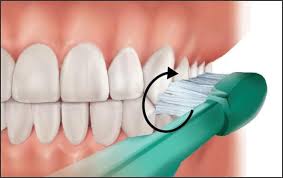
5. Manage Stress to Prevent Oral Health Issues: Stress is often overlooked as a contributing factor to oral health issues, but it can play a major role in the development of gum disease and other infections that may lead to pus. When stressed, people may grind their teeth, clench their jaws, or neglect their oral hygiene, all of which increase the risk of dental problems. Chronic stress can also weaken your immune system, making it more difficult for your body to fight off infections in your mouth.
Why This Works:
- Reduces Teeth Grinding: Managing stress can help prevent the physical act of grinding or clenching your teeth, which can lead to cracks, fractures, and gum irritation.
- Boosts Immune Function: By reducing stress, you help your immune system remain strong and better equipped to fight off infections.
- Improves Oral Hygiene Habits: When you’re not overwhelmed by stress, you’re more likely to maintain consistent oral care, which helps prevent the bacteria buildup that leads to pus.
Conclusion:
Pus in the mouth is often a sign of an infection, but with proper care, attention, and prevention strategies, it’s a problem that can be avoided or effectively treated. By following these 5 tips—along with regular dental check-ups and maintaining a healthy lifestyle—you’ll not only reduce your risk of pus in the mouth but also promote better overall oral health. Keep your teeth, gums, and immune system in top shape, and enjoy a healthier, pain-free smile!
By incorporating these additional detailed tips, your readers will be more engaged and find more value in your content. These tips not only provide solutions for immediate concerns but also educate them on long-term habits for maintaining oral health. This extended blog will help keep visitors on your website longer and encourage them to return for more health-related advice.
Let me know if you need any further adjustments!
